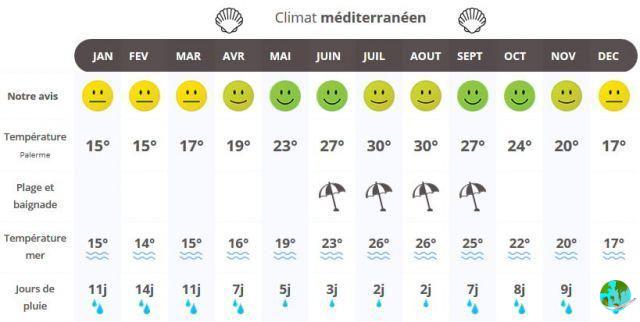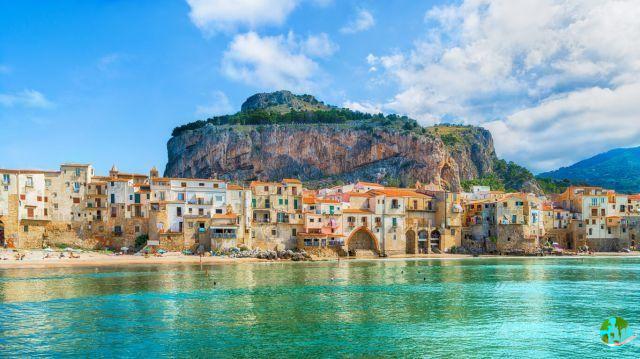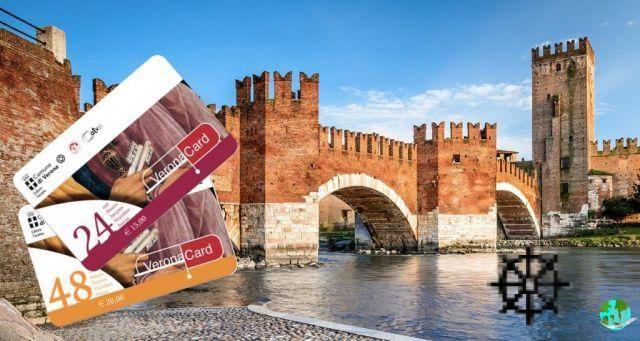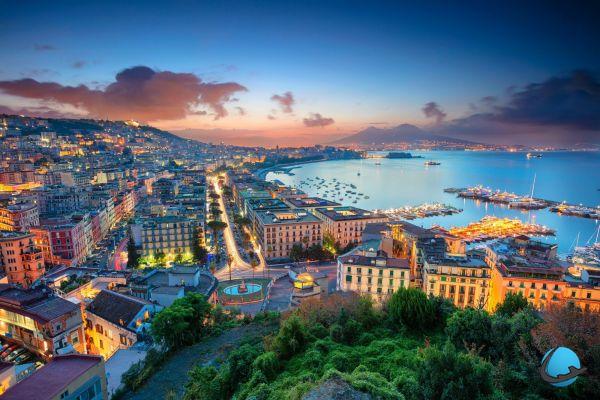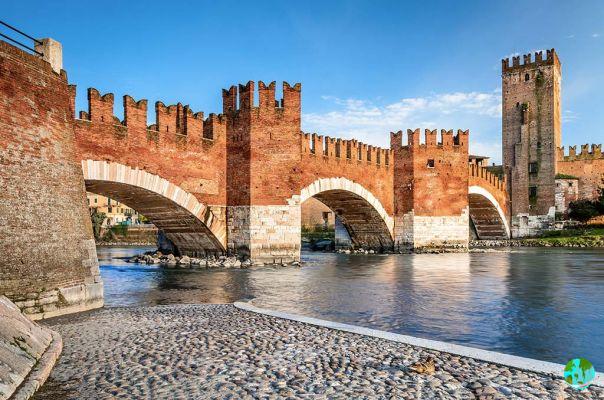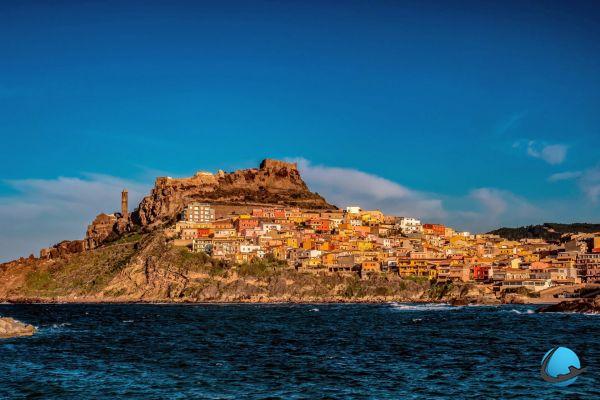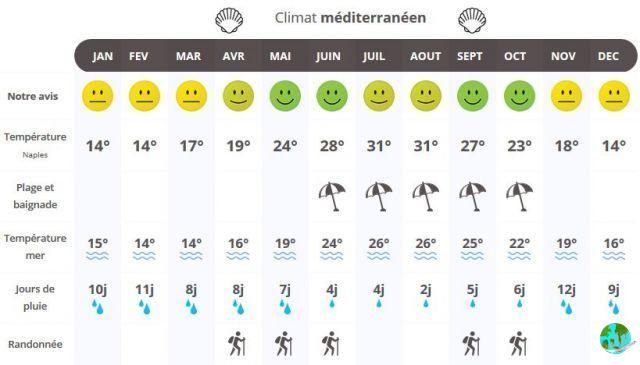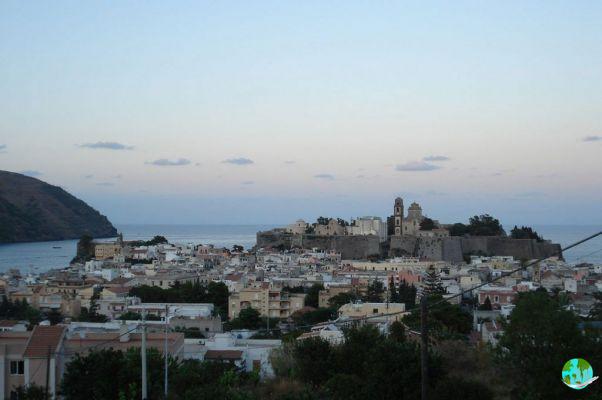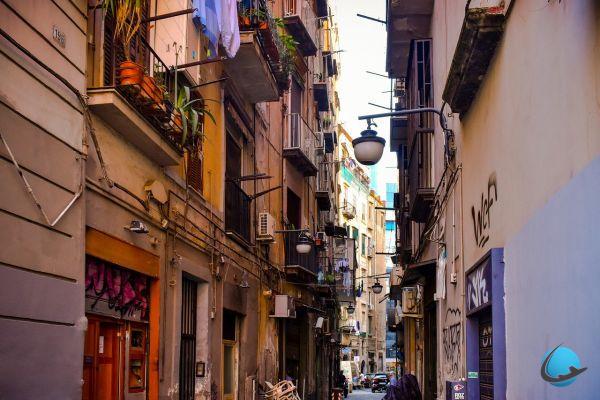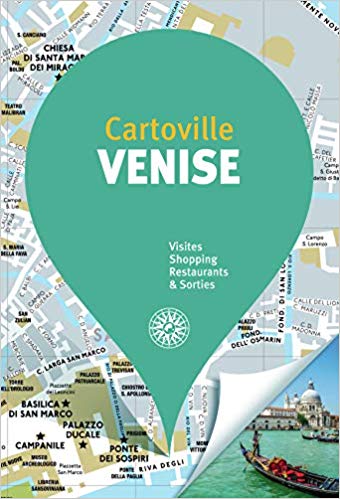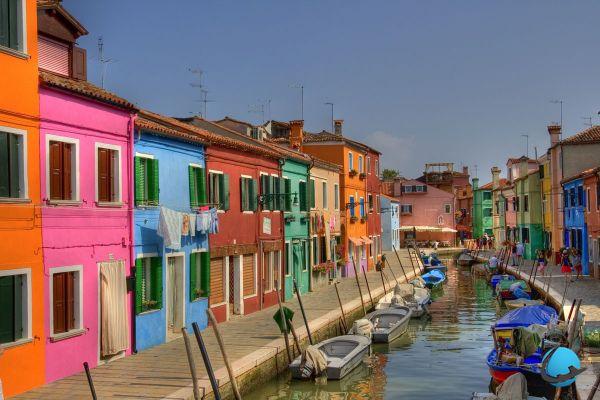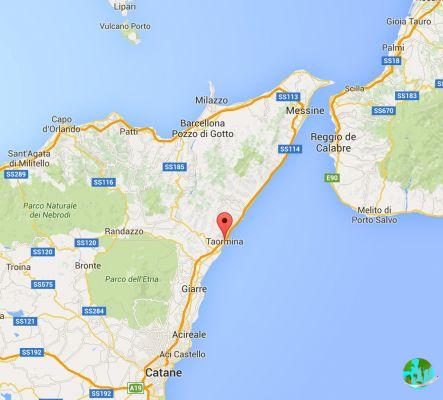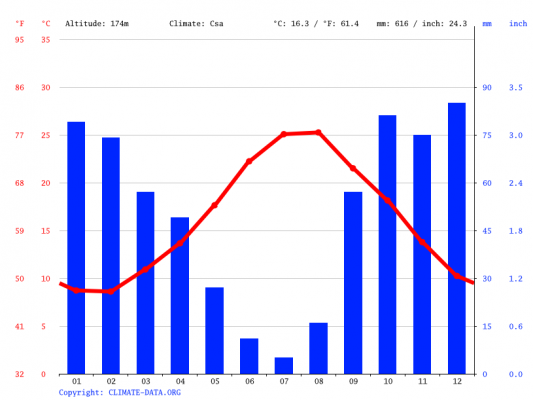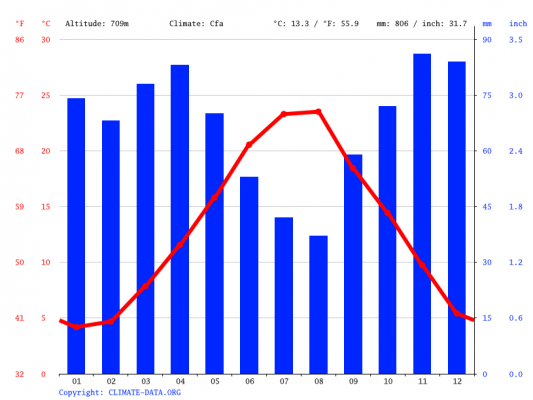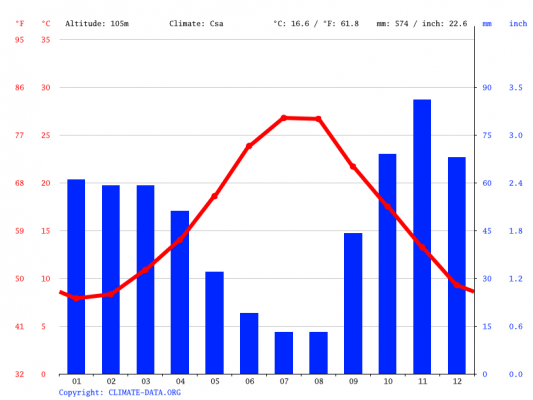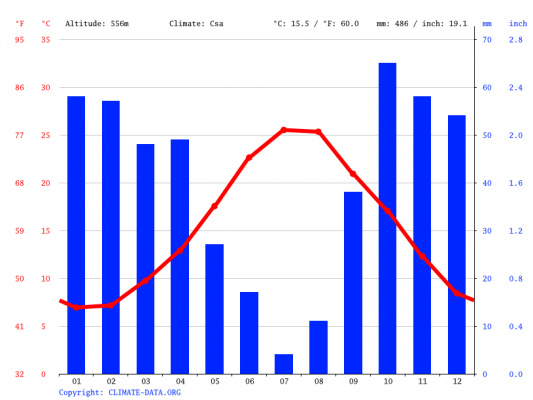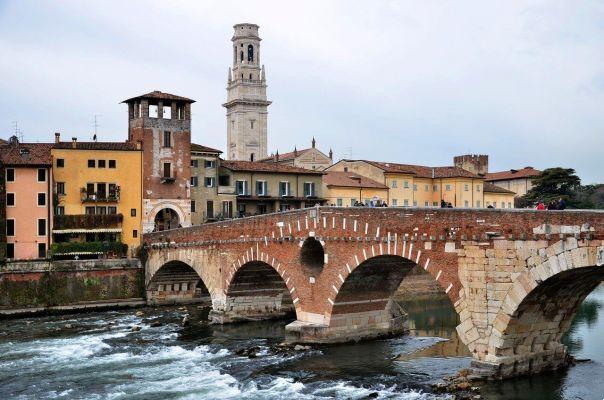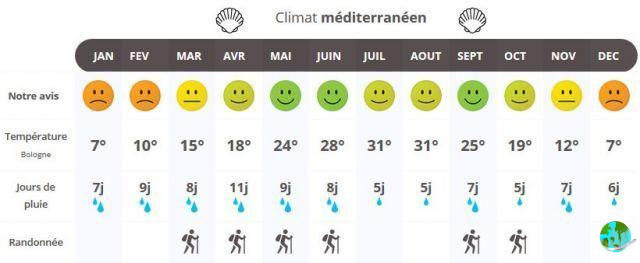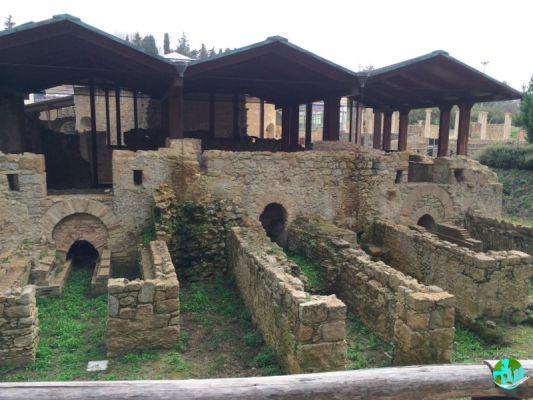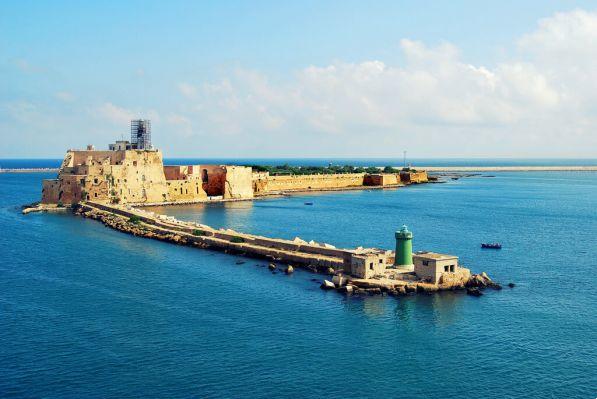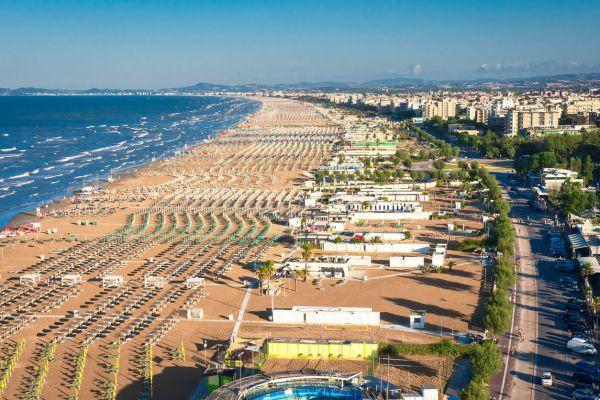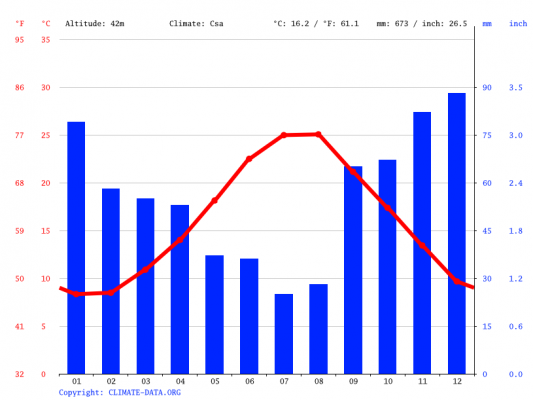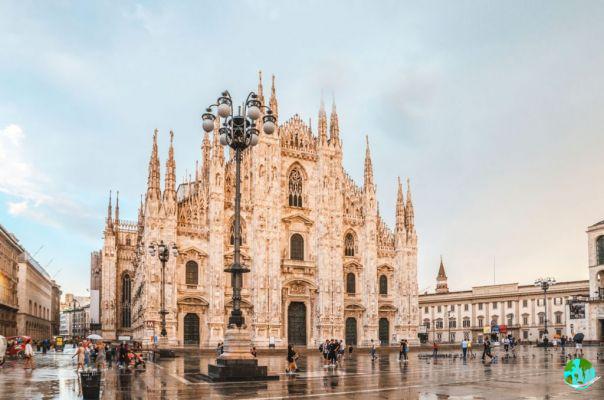After recently telling you about visiting Saint Mark's Basilica, let's go visit the Doge's Palace in Venice. The Doge's Palace is "the other" must-see in Venice along with the basilica. It is also located on Saint Mark's Square, so it is impossible to miss it, it is an imposing building, which played a major role in the history of the city, must be visited. You will find here, how to visit the Doge's Palace, the schedules, how to book your guided tour of the palace or its history.
Visit of the Doge's Palace in Venice:
> Prepare your visit to Venice
> Times and reservations for visits to the Doge's Palace
> History of the Doge's Palace in Venice
> What to see during a visit to the Doge's Palace?
Looking for a Venice travel guide?
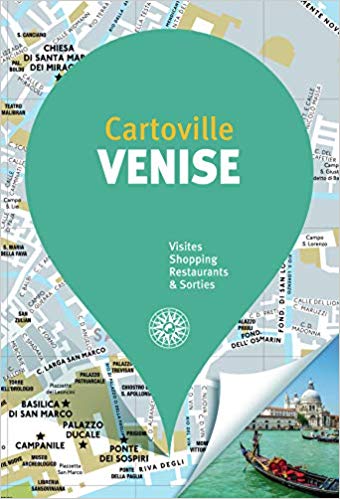 Like many, I often travel with a travel guide. If you are looking for a guide for your visit to Venice, let me recommend the "Cartoville" guide from Gallimard. These guides are perfect for directing you during a city trip.
Like many, I often travel with a travel guide. If you are looking for a guide for your visit to Venice, let me recommend the "Cartoville" guide from Gallimard. These guides are perfect for directing you during a city trip.
Organized in neighborhoods with numerous maps, the “Cartoville” guides really stand out from their competitors by their practical and intuitive aspect. You will discover the essentials of each district, the places to eat, where to go out, etc.
This link allows you to book your guided tour of the Doge's Palace directly. Book your visit to the Doge's Palace.
Prepare your visit to Venice
Let's start with some practical advice for a successful visit to Venice. Plane, transfer to downtown Venice, accommodation and must-see activities.
Getting to Venice: Plane, airport, transfer to the city center:
Many flights are offered from various French airports to Venice.
Note that the city has two airports.
The main airport is Marco Polo Airport. From the latter you can reach the city center of Venice by booking a water taxi, the most practical means of transport to return to the center of Venice.
The second airport, located outside the city is Treviso Airport. It is from this airport that you will return to Venice if you opt for a flight with Ryanair, for example. From this airport, located about 40 kilometers from Venice, you can book a shuttle for about ten euros which will take you to the center of the city of Venice or to Mestre depending on where you are staying.
Activities to book in Venice:
Here are some of the essential activities to do in Venice and especially to book in advance to avoid any disappointment.
- Visit to the Doge's Palace
- Visit to Saint Mark's Basilica
- Campanile visit
- Visit to the islands of Murano and Burano
Schedules and booking of visits to the Doge's Palace
Let's start the visit of the Doge's Palace with the schedules, it is open from 8:30 a.m. to 19 p.m. in summer and until 17:30 p.m. in winter.
To visit the Doge's Palace, several solutions:
- Visiting the Doge's Palace alone: The first solution will be to buy your entrance tickets for the Doge's Palace online (in order to avoid the queue) then to visit the palace alone. The entrance is at the price of 28€ and will allow you to enter without waiting.
- Guided tour of the Doge's Palace: The second solution, the one I highly recommend, is to opt for a guided tour of the palace. Certainly more expensive, count an additional €15, this guided tour will allow you to learn more about the history of this building with multiple uses.
History of the Doge's Palace in Venice
The Doge's Palace, also called Ducal Palace, was the residence of the Doges, a word from the Venetian dialect which means dukes. It was here that the legislative, executive and judicial powers were centralized, of which the Doge had full management. Before visiting the Doge's Palace, discover its history!
Many transformations
The construction of the Doge's Palace began in 809 during the Republic of Venice, when the Venetians had fled the city of Torcello north of the lagoon, considered too vulnerable. It was then that they found refuge in the insular area Rivo Alto, or Rialto, right in the middle of this vast expanse of seawater. The future Venice was born. This first building was a military fort with a rectangular architectural plan, decked out with high walls and four defensive corner towers, quickly completed by the Basilica of San Marco. Indeed, a prodigious event occurred in 828: two merchants were returning from their expedition to Alexandria, accompanied by the relics of the Evangelist Saint Mark.
The city immediately experienced a resounding religious prestige and it seems essential to show the glory of a radiant city. However, a devastating fire largely destroyed the palazzo in 976. It was not until December 28, 1340 that its restructuring began, with the creation of the Sala Nuova du Grand Conseil, which was completed in 1366.
In 1365, the Doge Marco Cornaro asked the painter Guariento di Arpo from Padua to decorate it. But in 1577, a new fire ravaged most of these canvases. Fragments of the Coronation of the Virgin in Paradise were found in 1903, you will also be able to admire them in the Arms Room if you decide to visit the Doge's Palace. The Venetian authorities then organized a competition to paint a representation of Paradise. Veronese is chosen but dies before beginning his work. Jacopo Tintoretto, helped by his son, finally made the paintings that can be seen during a visit to the Doge's Palace. Finally, all these successive modifications gave rise to an accumulation of both architectural and artistic wealth, which even the greatest kings could legitimately envy.
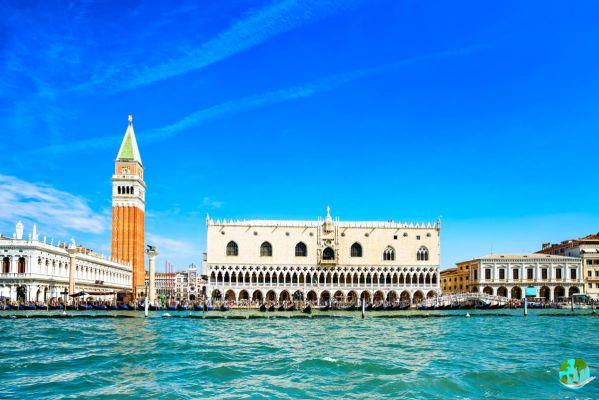
The seat of the Venetian administration
From the outset, the Doge's Palace brought together all the powers within it, which revolved around the large interior courtyard. Thus, the ducal residence is installed on the side of the Rio de la Canonica canal spanned by the famous Bridge of Sighs. As for the Government, its seat took place on the side of the Bassin de Saint-Marc, while the Palace of Justice faces the Piazzetta Saint-Marc. Until the 16th century, the palazzo also housed the prisons of the Venetian city, located under the roofs. All this is explained by the sacred power conferred by the backing of the monument to the Basilica of Saint Mark where the body of the famous disciple of Christ rests, like the temple of Solomon. For the Republic of Venice, this holy relic represented a major political asset that would testify to its glorious power and its independence obtained under the domination of the Byzantine Empire. Moreover, many similarities with the most famous temple in Jerusalem evoke the will of the dogal power to include strong symbols of biblical history there. Thus, the Ducal Palace has identical proportions, but also the same organization and the exact functions of each room of the temple. It seems obvious that this influence is openly assumed, as evidenced by the exterior sculpture of the Judgment of Solomon. It was in this context that the entire political system of Venice was brought together in one place. And what more beautiful symbol than Piazza San Marco?
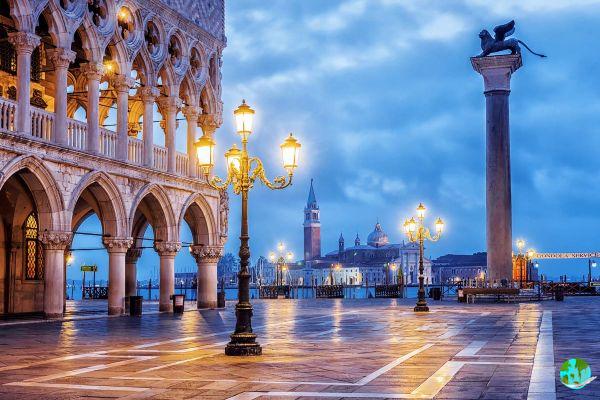
What to see during a visit to the Doge's Palace?
During a trip to Venice, visiting the Doge's Palace is a must not only to delve into the city's past and the reasons for its splendor, but also to marvel at a monument of rare beauty. With or without a guide, you will discover during the sumptuous palace, cross the Ponte dei sospiri and enter the cells of the New Prison. You will discover the secrets of the doges and the anecdotes that have punctuated the life of this mythical place will be revealed to you, enough to make you spend an extremely enriching and fascinating moment.
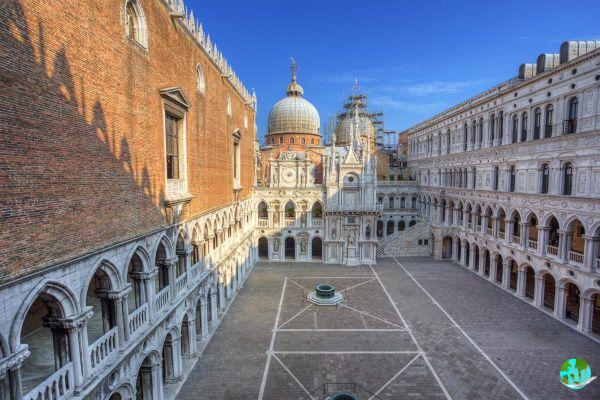
The architecture of the Doge's Palace
Located on the banks of the Grand Canal near its mouth, this sumptuous Venetian palace is visible from the Adriatic Sea. Considered the most beautiful architectural work in Venice and the jewel of the San Marco district, it is the perfect example of a successful marriage between Gothic and Byzantine art. No wonder that when you know that the best architects, sculptors, and masters have succeeded to build it and refine over the centuries the artistic prowess that represents the palazzo! As a result, the exterior visual rendering is particularly original, based on the principle of mass inversion. Thus, the lower part is composed of columns forming 17 arcades, which gives an impression of lightness and delicacy. Above, an additional row of a multitude of even finer columns gives rise to a trefoil and openwork gallery. Conversely, the upper part consists of a most majestic solid wall, surmounted by a cornice shaped in hollowed-out pyramids and needles.
The facades of the Doge's Palace
Each of the two facades of the Ducal Palace is adorned with a large loggia, a characteristic of the pure Gothic style, and decorations that explicitly express the centralization of powers in a single place. You can then admire an emblematic figure of Venice who exercises and holds justice, among other chimeras, angels, children and fantastic animals. The sculptures adorning the corners of the palace all have biblical significance and testify to a real political strategy. Indeed, statues take up key scenes from the Old Testament such as the drunkenness of Noah or Adam and Eve. On the Piazetta side, two red marble columns show that the death penalty sentences were proclaimed in these places. You will pass the great portal of the palace, known as Porta della Carta, designed in 1440 to serve as the main door. You will be able to observe a sculpted tympanum which represents in particular the characters who have marked the history of Venice, such as the doge Francesco Foscari on his knees facing the lion of San Marco. This Gothic masterpiece, whose internal face is adorned with scrolls, leads to a vaulted passage leading to the large inner courtyard. This displays a very assertive Renaissance style and opens onto two bronze well copings exposed in its heart.
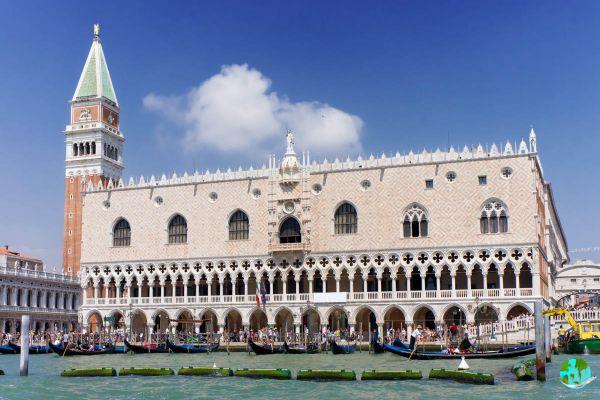
The stairs of the palazzo
From the inner courtyard, you will reach the Giants' Staircase built entirely in marble around 1485. It owes its name to the imposing statues of Mars and Neptune sculpted in 1554, enthroned at the top of the ramp. This is where the investiture of the doges took place. By then taking the staircase adorned with gold leaf and paintings representing Mercury and Venus, whose entrance is guarded by a Hercules and an Atlas prodigiously sculpted by Titian Aspetti, you will reach the institutional rooms of Venice. To visit the Doge's Palace is then to browse the polling room, those of the Senate and of the Council of Ten, all sublimely restored.
A row of opulently decorated rooms
Linger in the Grand Council Chamber, 53 meters long by 25 meters wide. Its gilded ceiling with compartments frames compositions with meticulously finished finishes, revealing all the luxury of yesteryear; while on the walls are exposed the portraits of the first 76 doges of Venice. Throughout the visit, you will be able to marvel at the paintings of the greatest Venetian masters, including the illustrious Paul Veronese with works such as Jupiter striking down the Vices, Saint Mark crowning the Virtues, Dialectics or Industry, Venice receiving the homage of Hercules and Ceres, etc. But also, Ariadne, Venus and Bacchus, and obviously the impressive painting of Paradise 22 meters long are all scenes created by the talented Tintoretto. Do not miss either the armory transformed into an archaeological museum, the room della bussola where you will notice an opening which was once masked by a marble lion's head, mouth wide open to collect secret denunciations, nor the room of the Anti -College where the ambassadors awaited their audience before being received in the hall of the College.
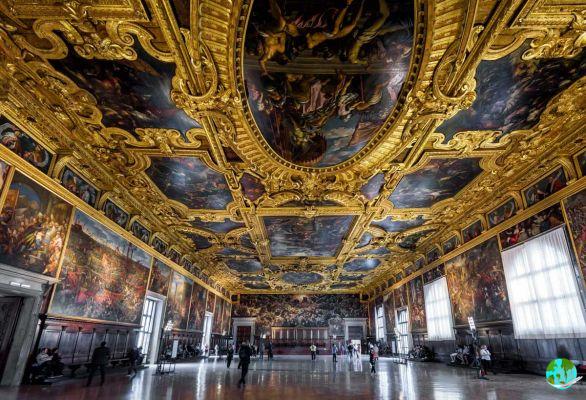
The prison of the Doge's Palace
Visiting the Doge's Palace also means crossing the Bridge of Sighs created in 1589 by Antonio da Ponte, with a double passage: one communicates with the old dungeon, located under the lead roofs of the palazzo, and the other with the new prison installed in the basement. Whereas the detainees until now had to endure temperatures of up to 50°, they now had to endure the cold and humidity. Moreover, for security reasons, the visit is prohibited during a heat wave as the heat is overwhelming. It also happens that it cannot take place in the event of flooding, since the cells are frequently invaded by water. You will finally learn that a floor has been placed halfway up the windows of the official offices, with the aim of concealing this dark reality from the ambassadors... who could not have suspected that people were kept locked up in such conditions, not to mention the torture!




